Team leader: Hana Grison
The priority of our research is to understand the mechanisms at work in our environment and thus contribute to its sustainability. To do this, we use geophysical methods to investigate not only shallow layers of geology/volcanology/archaeology, but also deeper structures for geothermal energy exploitation. Specifically, we address the following topics:
Environmental research on soils and rocks
As part of our environmental studies, we measure the magnetic properties of soils and rocks to study, e.g., pollution and/or to more accurately determine soil characteristics. In this area, we cooperate in particular with colleagues from Poland and Belgium.
Geothermal research
In geothermal research we measure the thermophysical properties of rocks from boreholes to determine and refine the values of the Earth’s heat flux and calculate the temperature in the Earth’s crust.
We investigate the potential for exploiting geothermal energy, and in interdisciplinary studies we look at the links between air, soil and bedrock temperature. Temperature data are also used for palaeoclimate reconstructions, including the occurrence and dynamics of permafrost.
Non-destructive archaeological research
The aim is to streamline archaeological research by measuring magnetic susceptibility, magnetic field strength, electrical resistivity tomography (ERT) and microgravimetry. In addition to identifying hidden archaeologically significant remains, another goal is to obtain information from the magnetic and geochemical record of past human activity in the soil.
Research on shallow geological structures
We contribute to studies of salt bodies and to search for unknown volcanic structures by gravimetry and magnetometry, supplemented by ERT measurements. This research also includes 3D gravimetric and magnetic modelling.
Since 2007, we have been cooperating with German geological organisations to search for volcanic structures in Bavaria, the Czech Republic and Saxony.
Hydrogeological research
We investigate the hydrogeological regime in a coal mine based on microgravimetric monitoring. In the CSA quarry, we monitor the stability of the risky slope of the Jezeří Castle mine using inclinometer stations.
Laboratory equipment
Bartington MS2B (dual frequency), probe for soil cores MS2C (https://www.bartington.com)
Agico instruments: MFK1, KLY5 with 3D Rotator, CS4/ CS-L High/Low Temperature Furnace Apparatus (https://www.agico.com)
ADE EV9 vibrating sample magnetometer (DSM Magnetics, ADE Corporation; Lowell, MA, USA):Hysteresis loops (induced magnetization) magnetic fields from -2 to +2 T.
Instruments for the in-situ measurements
Batrington MS2/MS3 System for surface magnetic mapping: MS2D and MS2F (https://www.bartington.com)
Susceptibility meter SM400 (http://www.zhinstruments.com)
Shirt Pocket zise magnetic susceptibility meter SM30 (http://www.zhinstruments.com)
Potrable magnetic susceptibility meters with adjustable frequency and field intensity SM 150L and SM150H (http://www.zhinstruments.com)
Gravimeter Scintrex CG-6 (https://scintrexltd.com)
Gravimeter LaCoste&Romberg model D (http://microglacoste.com)
Automatic resistivitity system ARESII in 5-channel configuration with 10 cable sections (http://www.gfinstruments.cz/)
Topic of Bacelors/Master/PhD thesis
Development of 3D gravity modelling of salt diapirs (PrF UK, R. Beránek, PhD theses)
Running projects
- Czech Science Foundation – National Science Centre Poland 23-09559L, 2024-2026
- The origin of iron minerals in soils with high permeability and determination of soil diagnostic horizons using magnetic proxies – E. Petrovský (PI), team members Grison, Stejskalová
Mobility Plus (MPP) between CAS and FNRS (Belgium), 2023–2025 - Geophysical survey as a tool for assessing magnetomineralogical changes in soils at archaeological sites endangered by erosion – H. Grison (PI), team members Š. Stejskalová, R. Klanica, R. Beránek, E. Petrovský
- Mobility project CAS, 2022-2024. Comparison of geophysical and geological structures of the Western Carpathian lithosphere with other orogenic areas in Europe (mainly Bohemian Massif and Norwegian Caledonides) – R. Klanica (PI), S. Kováčiková
- Grant GACR, 2024-2026. Structure and dynamics of shallow salt sheet extrusion investigated by means of magnetotellurics, gravity and analog & numerical modelling – R. Klanica. J. Mrlina team members, G.Hill (PI)
- Grant GACR 2022-2024, Geodynamic controls on continental rifting in Cenozoic central Europe: Insight from the Eger Rift, Bohemia] – J. Mrlina team member, D. Uličný (PI)
- Since 2016 International collaboration project AlpArrayGravityGroup (AAGG) – Mrlina
- Cooperation with industry support: Tilt and groundwater monitoring in Jezeří gallery, North Bohemia – Severní energetická, a.s., project SE 2023/34 – observatory program since 1982 – J. Mrlina (PI), Polák, Skalský, Seidl
- Since 2007 partnership projects with Bavarian and Saxonian Geological Surveys on research of volcanic structures in the Czechia, Bavaria and Saxony – Mrlina (PI), Beránek, Polák, Klanica
- SYNERGYS – Borehole Thermal Energy Storage, BTES
Completed research projects
COST Action SAGA (The Soil Science & Archaeo-Geophysics Alliance) from 10/2018 until 4/2023 (H. Grison)
Inter COST Project “Application of Geophysical Approach in Archaeological Research and Prospection“ is supported by the program INTER-EXCELLENCE of the Ministry of Education, Youth and Sports of the Czech Republic (MEYS), grant No. LTC19029, 2019-2022. (H. Grison (PI), R. Klanica, J. Mrlina, Š. Stejskalová)
Mobility project ASCR 2021-2022 – Comparison of geophysical and geological structures of the Western Carpathian lithosphere with other orogenic areas in Europe (mainly Bohemian Massif and Norwegian Caledonides) (R. Klanica(PI), S. Kováčiková)
Cooperation with industry support: Hydrological regime in coal mine indicated by gravity monitoring – Severočeské doly, a.s. – project 2023 (Mrlina)
People
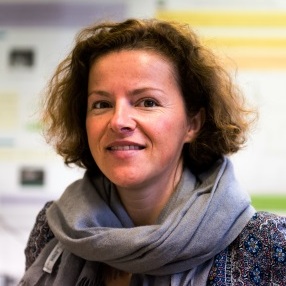 |
ORCID: 0000-0002-0402-2026 |
Ing, PhD |
Researcher (team leader) |
Environmental magnetism, soil science, archaeomagnetic dating |
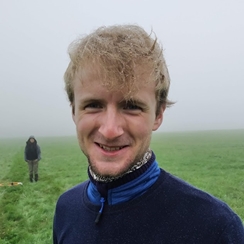 |
Roman Beránek ORCID: 0000-0002-7273-8472 |
PhD student | Microgravimetry, magnetometry, 3D gravity-magnetic modeling and inversion of geophysical data, archaeogeophysics, volcanology, and geodynamics | |
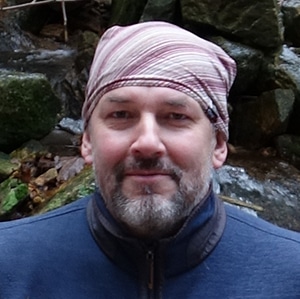 |
Petr Dědeček | PhD | Researcher | |
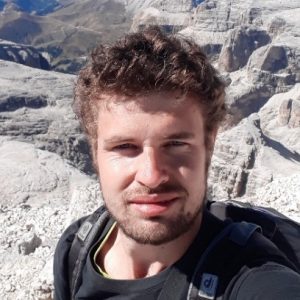 |
ORCID: 0000-0002-8302-7537 |
Mgr, PhD | Researcher |
Geoelectrical methos, magnetometry, magnetotellurics
|
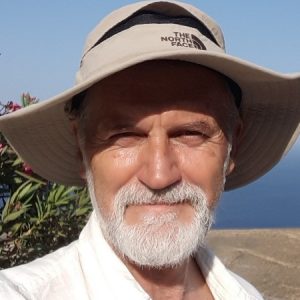 |
ORCID: 0000-0002-4224-1609 |
RNDr, PhD | Senior researcher | Gravimetry, applied geophysics, geodynamics, volcanology, reservoirs,gravity/magnetic exploration, archaeogeophysics |
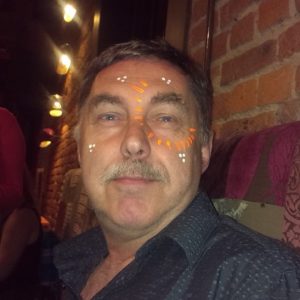 |
ORCID: 0000-0001-7792-9123 |
RNDr, CSc | Senior researcher | Environmental magnetism |
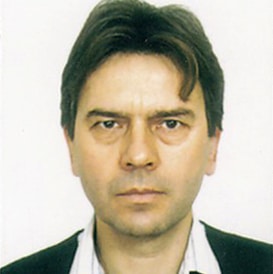 |
ORCID: 0000-0002-0300-7545 |
RNDr, CSc | Researcher |
Geothermics, permafrost dynamics, paleoclimate reconstructions, utilization of geothermal energy |
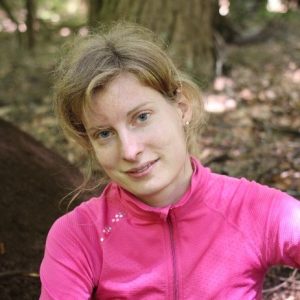 |
Šárka Stejskalová ORCID: 0000-0002-0722-0466 |
Ing, PhD | Researcher | Environmental magnetism, soil science |
Collaborating members
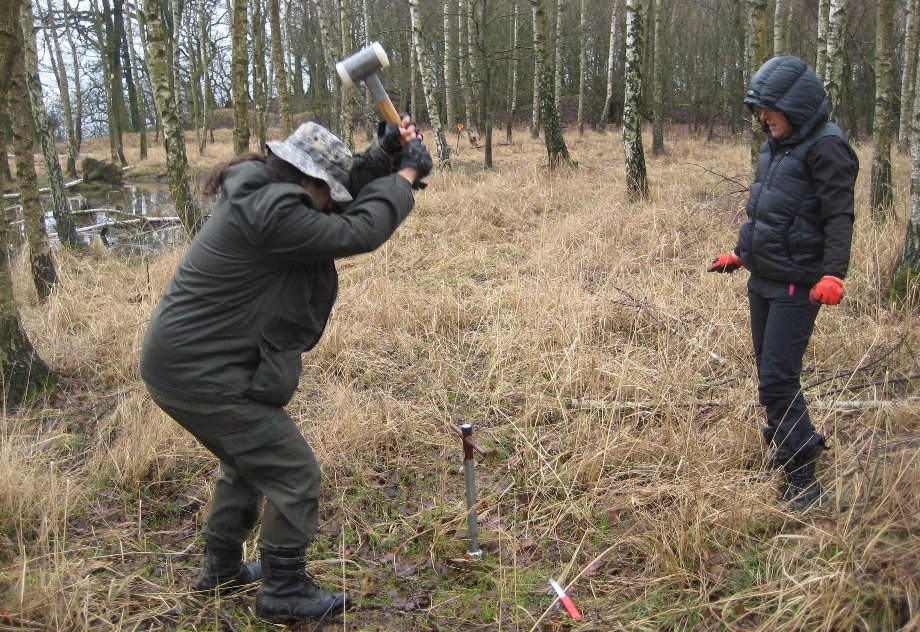
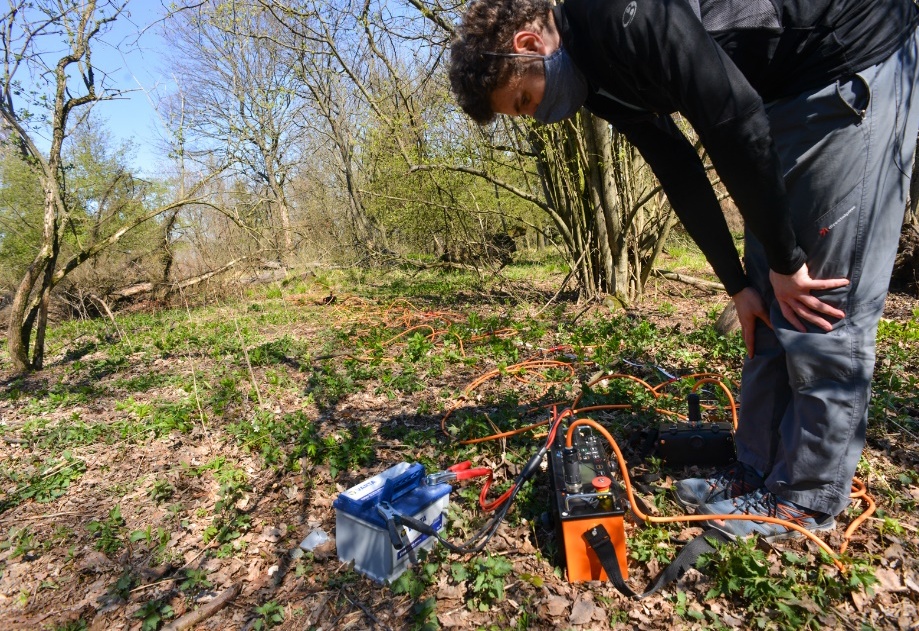
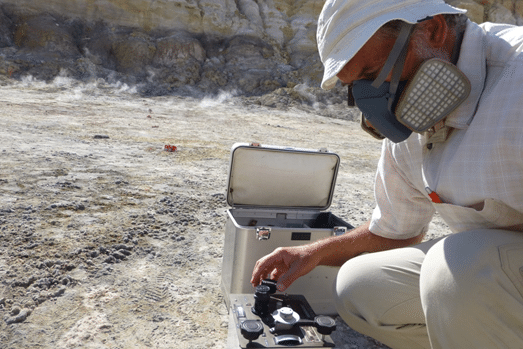
Soil sampling at the Hillfort Štěpánov, Czechia, Inter-COST project. Magnetic soil properties with ERT measurements are employed for description of Late Bronze Age water reservoirs (photo – E. Garcia, 2/2020)
R. Klanica při ERT měření na hradišti Hradišťany (starší doba bronzová), projekt Inter-COST. Detekce možného zaniklého vodního zdroje na hradišti (foto – T. Junek, 5/2020)
Gravity monitoring in Stefanos crater (with enough H2S to respire), Greece – observatory project CzechGeo (photo – J.Mrlina, 2019)
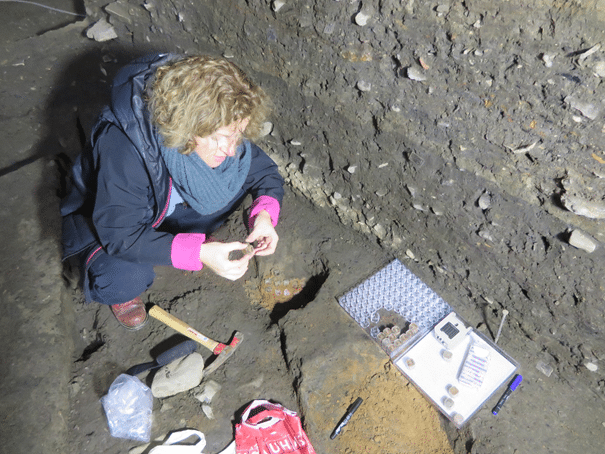
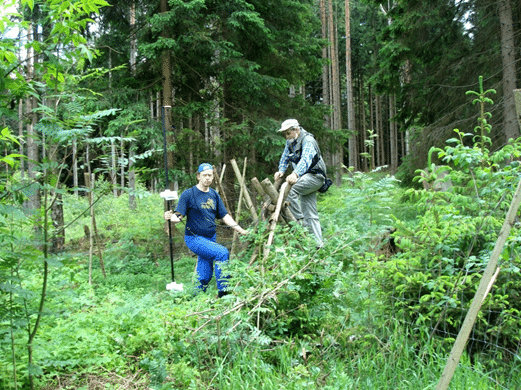
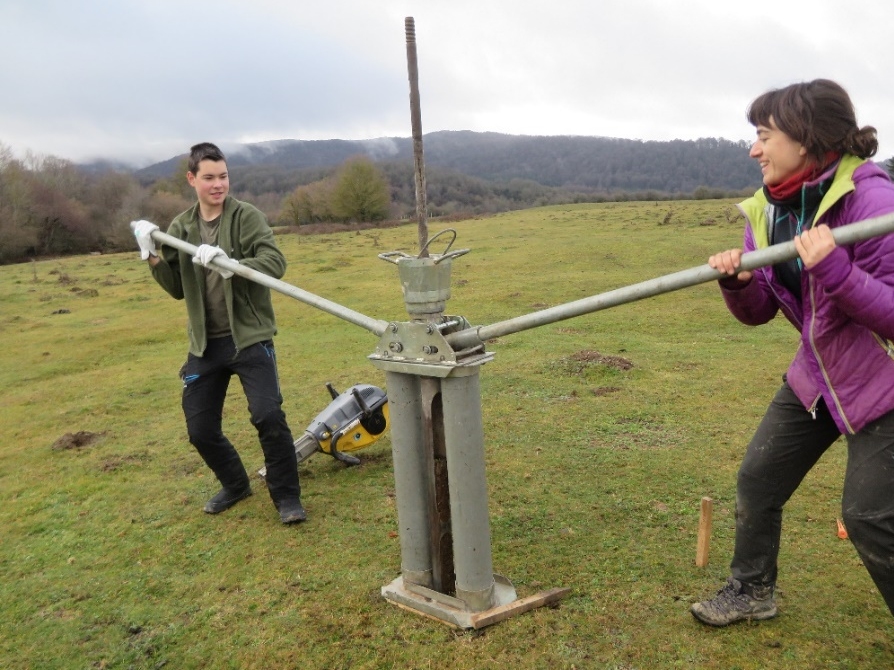
Sampling for paleomagnetic dating, cellar V Kolkovně street, Inter-Cost project, (Photo – P. Schnabl, 2/2022)
Magnetic survey in Bažina maar, scientific cooperation with GFZ Potsdam (photo – V.Polák, 2021)
Drill-coring at the Roman site of Zaldua, the Basque province of Navare. Short term scientific mission project in scope of SAGA Action (photo H. Grison, 1/2020)


